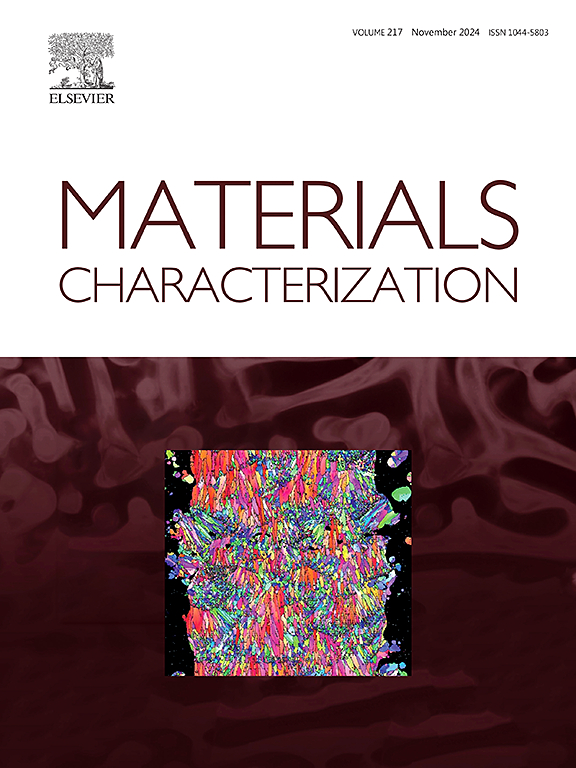Evolution of site-specific solidification microstructure and texture during additive manufacturing of stainless steel 316L by laser powder bed fusion
IF 4.8
2区 材料科学
Q1 MATERIALS SCIENCE, CHARACTERIZATION & TESTING
引用次数: 0
Abstract
The present investigation addresses the evolution of microstructure and texture due to site-specific solidification conditions in additively manufactured stainless steel 316L by Laser Powder Bed Fusion (LPBF) technique. Experiments were designed with increasing dimensionality from 1D to 3D that simulates and deconvolutes the different factors influencing the solidification conditions during additive manufacturing. At locations near to substrate, the large thermal gradient, the repeated heating/cooling cycle and the influence of overlapping region due to melt pool results in the formation of significantly high dislocation density, anisotropic columnar morphology of grains, and crystallographic texture consisting of 〈100〉 and 〈110〉 fibers along the building direction. In contrast, the availability of multiple heat flow direction combined with decreased intensity of heating/cooling cycle is experienced at the top region, that results into comparatively lesser dislocation density, decreased anisotropy and formation of 〈111〉 and other non-trivial texture fibers. To some extent, the solution annealing treatment eliminated the heterogeneities related to grains morphology and dislocation density, however, texture remains unaffected.
求助全文
约1分钟内获得全文
求助全文
来源期刊

Materials Characterization
工程技术-材料科学:表征与测试
CiteScore
7.60
自引率
8.50%
发文量
746
审稿时长
36 days
期刊介绍:
Materials Characterization features original articles and state-of-the-art reviews on theoretical and practical aspects of the structure and behaviour of materials.
The Journal focuses on all characterization techniques, including all forms of microscopy (light, electron, acoustic, etc.,) and analysis (especially microanalysis and surface analytical techniques). Developments in both this wide range of techniques and their application to the quantification of the microstructure of materials are essential facets of the Journal.
The Journal provides the Materials Scientist/Engineer with up-to-date information on many types of materials with an underlying theme of explaining the behavior of materials using novel approaches. Materials covered by the journal include:
Metals & Alloys
Ceramics
Nanomaterials
Biomedical materials
Optical materials
Composites
Natural Materials.
 求助内容:
求助内容: 应助结果提醒方式:
应助结果提醒方式:


